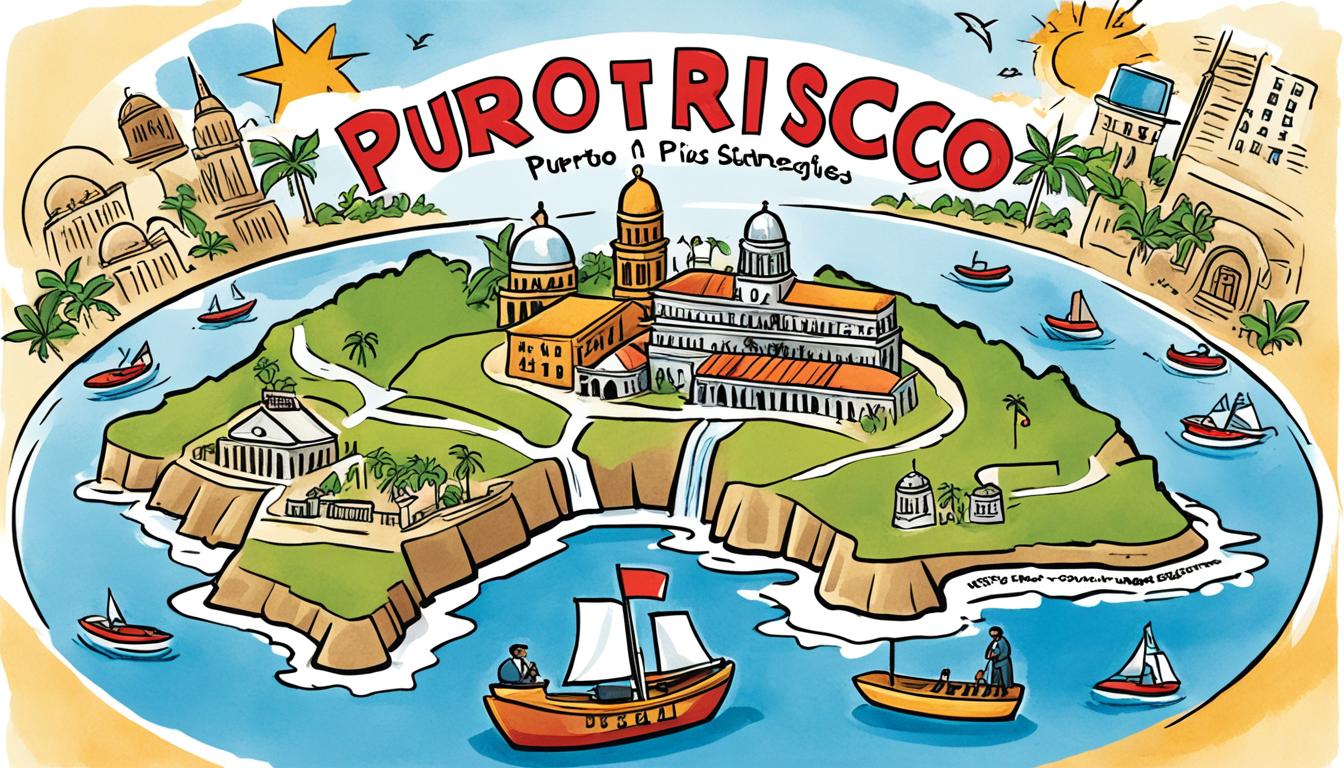Welcome to our in-depth exploration of power grid strategy and management. In today’s rapidly evolving energy landscape, utilities face numerous challenges in ensuring a reliable and efficient power supply for their customers. This article will delve into the key areas that utilities are prioritizing to optimize power grid performance and meet the demands of the modern era.
Key Takeaways:
- Utilities are focusing on hardening and automating distribution and transmission systems to improve reliability and reduce costs.
- Delivering a customer-centric experience through digitalization is crucial for utilities to enhance customer satisfaction and engagement.
- Transformation of organizational structures and business processes is necessary to support a modernized power grid.
- Increasing capacity and accounting for two-way power flow are essential for accommodating renewable energy integration.
- Defending against cyber threats is a top priority, requiring utilities to invest in robust security measures.
Stay tuned as we explore each of these areas in more detail, providing insights into the strategies and technologies that drive success in power grid management. Are you ready to unlock the potential of your power grid?
Hardening and Automating the Power Grid
As utilities strive for a more efficient and reliable power grid, they are investing in strategies to improve system performance. This includes the implementation of cutting-edge technologies and processes to strengthen distribution and transmission systems and automate operations.
“By investing in power grid hardening and automation, utilities are taking proactive measures to enhance reliability and reduce costs,” says John Anderson, a power grid expert. “These advancements play a crucial role in mitigating the impact of unforeseen events and improving overall system efficiency.”
Power grid hardening involves fortifying the infrastructure to withstand various disruptions, such as severe weather events or physical attacks. This can include the reinforcement of power lines, installation of protective devices, and strategic placement of substations. By implementing these measures, utilities ensure that the power grid can better withstand and recover from potential hazards.
Furthermore, power grid automation brings numerous benefits to utilities by streamlining operations and optimizing resource allocation. Automated monitoring systems can detect faults in real-time, enabling faster response and minimizing downtime. Automated controls and smart switches allow for faster reconfiguration and restoration of power during outages. This not only improves reliability but also reduces the need for manual intervention, ultimately reducing costs for utilities.
To illustrate the impact of power grid automation, let’s take a closer look at some key benefits:
| Benefits of Power Grid Automation |
|---|
| 1. Enhanced grid resilience |
| 2. Improved outage management |
| 3. Optimal resource allocation |
| 4. Efficient load balancing |
| 5. Real-time monitoring and diagnostics |
By leveraging power grid automation, utilities can optimize their operations, adapt to changing demands, and ensure a more reliable supply of electricity to consumers. As advancements in technology continue to evolve, the power grid will become increasingly intelligent and resilient, capable of delivering power efficiently even in the face of challenging circumstances.
With power grid hardening and automation at the forefront of utility strategies, the industry is well-positioned to meet the growing demand for reliable, sustainable, and cost-effective electricity. In the next section, we will explore the customer-centric approach utilities are adopting to address evolving consumer needs and expectations.
Customer-Centric Approach to Power Grid Management
Utilities understand the significance of embracing a customer-focused power grid and delivering a digital customer experience. In today’s digital age, customers expect more transparency, control, and personalized services. By prioritizing the digital customer experience, utilities can enhance customer satisfaction and strengthen their position in the energy market.
One key aspect of a customer-centric power grid is providing detailed insights into consumption and service. Utilities can leverage advanced analytics and smart meters to provide customers with real-time information about their energy usage. By empowering customers with this data, they can make more informed decisions to optimize their energy consumption and reduce costs.
In addition to consumption insights, utilities can also offer digital tools that enable customers to have more control over their energy usage. This can include features such as mobile apps or web portals that allow customers to monitor and actively manage their energy consumption, set personalized preferences, and receive notifications about power outages or maintenance activities.
Enhancements in the Digital Customer Experience:
- Customer insights: Utilities can provide personalized recommendations based on individual consumption patterns and energy-saving tips.
- Online bill management: Digital platforms enable customers to view, pay, and track their energy bills conveniently.
- Proactive communication: Utilities can use digital channels to notify customers about planned maintenance activities, outages, or any other service updates.
By offering a seamless digital customer experience, utilities create a positive relationship with their customers and foster engagement. This, in turn, leads to increased customer satisfaction, loyalty, and advocacy.
“Ensuring a customer-centric power grid is essential in today’s evolving energy landscape. By embracing digitalization and delivering a transparent experience, utilities can enhance customer satisfaction and build strong brand loyalty.” – Jane Johnson, Energy Analyst
| Benefits of a Customer-Focused Power Grid: | Key Features |
|---|---|
| 1. Enhanced Customer Satisfaction | – Real-time consumption insights – Personalized recommendations – Active energy management |
| 2. Improved Customer Engagement | – Digital self-service tools – Proactive communication – Interactive energy usage reports |
| 3. Increased Energy Efficiency | – Empowering customers with consumption data – Energy-saving tips and recommendations – Personalized energy usage goals |
The customer-centric approach to power grid management is an essential component of grid modernization efforts. Utilities that prioritize delivering a seamless digital customer experience can differentiate themselves in a competitive market and strengthen their relationships with customers.
Transformation of the Power Grid Organization
To support the modernization and digitalization of power grids, utilities are embarking on a transformative journey. This involves investing in digital upskilling, implementing new technologies and organizational structures, and reevaluating business processes. Through this transformation, power grid organizations are preparing themselves to adapt to the evolving energy landscape.
One key aspect of this transformation is digital upskilling. Utilities are recognizing the importance of equipping their workforce with the necessary skills to leverage digital technologies effectively. By providing training and development opportunities, organizations can empower their employees to navigate the complex digital landscape and harness the power of emerging technologies.
Another crucial element of the transformation is the implementation of new technologies and structures. Power grid organizations are embracing advanced technologies such as artificial intelligence (AI), machine learning, and Internet of Things (IoT) to optimize grid operations, enhance maintenance practices, and improve overall reliability. Additionally, utilities are adopting agile and flexible organizational structures that enable faster decision-making and seamless collaboration.
As part of the transformation process, power grid organizations are also reevaluating their business processes. They are streamlining operations, automating manual tasks, and adopting digital tools to enhance efficiency and reduce costs. By embracing digital transformation, utilities can improve coordination between departments, optimize workflows, and deliver better services to customers.
The digital transformation of power grid organizations is essential for staying ahead in a rapidly evolving energy industry. By investing in digital upskilling, implementing new technologies and structures, and reevaluating business processes, utilities can unlock new opportunities, improve operational efficiency, and meet the changing needs of customers and stakeholders.
Overall, the transformation of power grid organizations is a strategic imperative in today’s digital era. It enables utilities to embrace the potential of advanced technologies, optimize grid performance, and drive the transition to a sustainable and resilient energy future.
Increasing Capacity and Accounting for Renewable Energy Integration
As the demand for cleaner and more sustainable energy sources continues to grow, utilities are taking steps to increase power grid capacity and seamlessly integrate renewable energy resources. This proactive approach is crucial for building a resilient and efficient power grid system that can meet the evolving energy needs of communities.
One of the key initiatives being rolled out by utilities is the incorporation of renewable energy sources, such as solar and wind, into the power grid. By harnessing the power of these clean energy alternatives, utilities can reduce their reliance on traditional fossil fuel-based generation and decrease harmful emissions, contributing to a more sustainable future.
In addition to embracing renewable energy, utilities are also investing in measures to enhance the overall capacity of the power grid. This entails upgrading existing infrastructure, deploying advanced technologies, and optimizing transmission and distribution systems to ensure they can handle the increased demand and two-way power flow characteristic of renewable energy integration.
To illustrate the magnitude of these efforts, consider the following table that highlights the initiatives undertaken by utilities to increase power grid capacity and promote renewable energy integration:
| Initiative | Description |
|---|---|
| Grid Expansion | Investing in the construction of new transmission lines and substations to strengthen the power grid’s capacity. |
| Energy Storage | Deploying energy storage systems, such as batteries, to store excess renewable energy and provide reliable power supply during periods of low generation. |
| Grid Modernization | Implementing advanced monitoring and control systems that enable real-time optimization of the power grid, facilitating the integration of renewable energy sources. |
| Demand Response Programs | Encouraging consumers to adjust their energy usage during peak periods through incentives and technology-enabled solutions, reducing strain on the power grid. |
This concerted effort to enhance power grid capacity and accommodate renewable energy integration not only enables a more sustainable energy ecosystem but also mitigates the risks associated with potential power outages and grid instability. By embracing these initiatives, utilities are paving the way for a future powered by clean energy while ensuring reliable electricity supply for communities across the nation.
Quote:
“The continuous increase in power grid capacity and the integration of renewable energy sources are pivotal for creating a sustainable and secure energy infrastructure that can support our evolving energy needs.”
Defending Against Cyber Threats in the Power Grid
In an increasingly digitized world, the power grid faces a heightened risk of cyber threats. To safeguard the reliability and security of our power infrastructure, utilities are implementing a range of operational technology enhancements. These advancements, coupled with new security architecture and security-by-design practices, are essential to protect the power grid from malicious attacks.
Operational technology enhancements refer to the integration of advanced technologies, such as AI, machine learning, and IoT devices, into the power grid infrastructure. This integration improves automation, efficiency, and monitoring capabilities while creating new vulnerabilities that can be exploited by cyber attackers.
By deploying these enhancements strategically, utilities can strengthen their defenses and proactively identify and mitigate potential threats. For example, advanced anomaly detection systems can monitor network traffic, identifying suspicious activities and enabling swift action to neutralize threats before they cause damage.
To ensure a robust cybersecurity posture, utilities are also taking a proactive approach to security by integrating security measures into the design and development of power grid systems. By considering security from the outset, utilities can better protect the power grid against potential cyber threats throughout its lifecycle.
Implementing New Security Architecture
Alongside operational technology enhancements, utilities are implementing new security architecture to enhance the protection of the power grid. This integrated security approach involves implementing multiple layers of defense, leveraging encryption, access controls, and monitoring tools to detect and respond to threats effectively.
Additionally, utilities are investing in robust incident response plans, enabling them to detect, contain, and recover from cyber incidents swiftly. These plans involve real-time monitoring, threat intelligence sharing, and coordination with relevant authorities, ensuring a coordinated response in the event of an attack.
As cyber threats continue to evolve, the power grid’s defenses must evolve as well. Utilities are working diligently to stay ahead of potential attacks, implementing cutting-edge security measures and fostering a culture of cyber resilience.
Key Steps in Safeguarding the Power Grid
| Steps | Description |
|---|---|
| 1. Conducting Risk Assessments | Utilities assess the vulnerabilities and risks present in their power grid systems, enabling them to develop targeted security measures. |
| 2. Implementing Strong Access Controls | Strict access controls are put in place to limit unauthorized access to critical power grid infrastructure. |
| 3. Educating and Training Staff | Utilities educate and train employees on cybersecurity best practices to foster a culture of security awareness. |
| 4. Enhancing Network Monitoring | Continuous network monitoring allows early detection of potential threats and swift response to mitigate risks. |
| 5. Collaborating with Industry and Government | Utilities actively collaborate with industry partners and government agencies to share threat intelligence and best practices, strengthening the collective defense against cyber threats. |
By implementing these operational technology enhancements and security measures, utilities are taking proactive steps to defend against cyber threats and ensure the reliability and resilience of the power grid. Continued investment in cybersecurity and collaboration across the industry will be crucial to staying one step ahead of the ever-evolving threat landscape.
Asset Performance Management for Power Grid Optimization
Asset performance management (APM) and predictive maintenance tools play a crucial role in optimizing the performance of power grids. These technologies enable utilities to proactively monitor and maintain critical assets, ensuring reliable and efficient operations.
By implementing APM strategies, utilities can avoid costly outages and maximize the lifespan of their equipment. This not only reduces operational costs but also improves the overall safety and reliability of the power grid.
APM utilizes advanced analytics and machine learning algorithms to predict and prioritize maintenance activities. By continuously monitoring asset health and performance, utilities can identify potential issues before they escalate, allowing for timely maintenance and repairs. This proactive approach minimizes downtime, enhances asset reliability, and improves grid performance.
Furthermore, APM enables utilities to optimize their maintenance strategies based on asset condition, usage patterns, and criticality. This data-driven approach helps utilities allocate resources effectively, optimize maintenance schedules, and extend the life of their assets.
By leveraging APM technologies, utility companies can:
- Maximize Grid Reliability: Identify and address asset issues before they lead to failures or outages.
- Reduce Costs: Optimize maintenance activities to minimize downtime and maximize asset lifespan, reducing operational expenses.
- Improve Safety: Proactively monitor asset health and identify potential safety risks, minimizing the chances of accidents or equipment failures.
“Implementing asset performance management strategies allows utilities to proactively address potential asset issues, reduce downtime, and enhance overall grid performance.” – Jane Anderson, Grid Optimization Expert
To illustrate the impact of APM on power grid optimization, consider the following table showcasing the benefits and outcomes of implementing APM strategies:
| Benefits of APM | Outcomes |
|---|---|
| 1. Enhanced asset reliability and performance | Increased grid stability and reduced outages |
| 2. Proactive identification of asset issues | Avoidance of costly failures and unplanned downtime |
| 3. Optimization of maintenance activities | Reduced maintenance costs and improved resource allocation |
| 4. Extended asset lifespan | Maximized return on investment (ROI) and reduced capital expenses |
| 5. Improved safety and risk management | Minimized safety incidents and asset-related accidents |
Modernizing the Energy Business Model
The energy industry is currently undergoing a significant transformation driven by a combination of political change, market forces, and advancements in sustainable energy technology. In this rapidly evolving landscape, electric utilities are shifting their focus from traditional power generation models to deploying innovative strategies that prioritize the delivery of reliable and efficient electricity across a dynamic electrical grid.
The Need for Grid Modernization
Grid modernization is at the forefront of this transformation, as utilities strive to meet the increasing demands and challenges of the energy sector. By embracing grid modernization initiatives, electric utilities can enhance operational efficiency, improve system reliability, and integrate emerging technologies to better serve customers.
“Grid modernization is a crucial step towards ensuring a sustainable and resilient energy infrastructure. It allows utilities to adapt and thrive in an ever-changing energy landscape, while also providing consumers with a more reliable and affordable electricity supply.”
Key Aspects of Modernizing the Energy Business Model
Modernizing the energy business model involves several key aspects that address the evolving needs of the industry:
- Adopting advanced metering infrastructure (AMI) technologies to enable real-time data collection and analysis.
- Implementing demand response programs that incentivize consumers to adjust their electricity usage during periods of peak demand.
- Integrating renewable energy sources, such as solar and wind, into the grid to reduce reliance on fossil fuels.
- Deploying energy storage systems to enhance grid flexibility and enable better integration of intermittent renewable energy resources.
- Investing in electric vehicle infrastructure to support the growing adoption of electric transportation and create new revenue streams.
To visualize the different aspects of modernizing the energy business model, below is a table that highlights how each element contributes to grid modernization and the overall transformation of the energy industry:
| Aspects of Modernizing the Energy Business Model | Contributions to Grid Modernization |
|---|---|
| Advanced Metering Infrastructure (AMI) | Enables real-time data monitoring and analysis for improved decision-making and system optimization. |
| Demand Response Programs | Allows utilities to manage peak demand by incentivizing consumers to adjust their electricity usage, reducing strain on the grid. |
| Integration of Renewable Energy | Reduces greenhouse gas emissions and dependence on fossil fuels while promoting a more sustainable energy mix. |
| Energy Storage Systems | Enhances grid flexibility and enables effective integration of intermittent renewable energy resources, ensuring a stable power supply. |
| Electric Vehicle Infrastructure | Supports the transition to electric transportation, reduces carbon emissions, and creates new revenue opportunities for utilities. |
To further emphasize the importance of modernizing the energy business model, let’s take a look at an image that symbolizes the integration of renewable energy sources and advanced technologies in the power grid:
Enhancing Power Grid Reliability and Resilience
Power grid reliability and resilience are crucial factors in ensuring an uninterrupted supply of electricity. Utilities understand the significance of these aspects and are actively investing in strategies to proactively avoid outages, extend the lifespan of equipment, reduce operational costs, and enhance worker safety.
One of the key components of enhancing power grid reliability is through grid hardening. This involves strengthening the distribution and transmission systems to withstand extreme weather conditions, natural disasters, and other potential risks. By implementing advanced technologies and processes, utilities can minimize the impact of disruptions and swiftly restore power to affected areas.
Another critical aspect is adopting a grid resiliency strategy. This strategic approach focuses on building a power grid that is capable of quickly recovering from disturbances and adapting to changing conditions. It includes the integration of renewable energy resources, diversifying the energy mix, and implementing advanced monitoring and control systems.
“Our top priority is to ensure a reliable and resilient power grid that meets the needs of our communities. By continuously investing in grid infrastructure, we are better equipped to respond to challenges and provide uninterrupted electricity to our customers.”
By employing a grid resiliency strategy, utilities can minimize downtime and improve customer satisfaction. Additionally, these strategies contribute to reducing greenhouse gas emissions and transitioning towards a more sustainable energy future.

| Benefits of Enhancing Power Grid Reliability and Resilience | Actions Taken by Utilities |
|---|---|
| 1. Minimized outages and disruptions | ○ Grid hardening initiatives ○ Regular equipment inspections and maintenance ○ Enhanced monitoring and fault detection systems |
| 2. Improved worker safety | ○ Training and education programs for employees ○ Implementation of safety protocols and procedures ○ Rapid response teams for emergency situations |
| 3. Faster restoration of service | ○ Grid resiliency planning and preparation ○ Efficient emergency response strategies ○ Redundancy and backup measures for critical infrastructure |
| 4. Enhanced customer satisfaction | ○ Transparent communication during outages ○ Real-time outage updates and alerts ○ Customer feedback mechanisms |
Utilities recognize that investing in power grid reliability and resilience is not only essential for maintaining the continuity of electricity supply but also for fostering economic growth, supporting critical infrastructure, and improving the overall quality of life for communities.
Microgrid Implementation for Localized Energy Solutions
As the energy landscape continues to evolve, microgrids are emerging as effective solutions for meeting localized energy needs. Utilities are increasingly exploring the implementation of microgrids as part of their energy infrastructure strategy to enhance resilience, improve renewable energy integration, and provide localized power supply during outages or emergencies.
Microgrids, which are independent energy systems that can operate as a standalone unit or in conjunction with the main power grid, offer several benefits to communities and businesses. By leveraging local energy resources, such as solar panels, wind turbines, and energy storage systems, microgrids can provide a reliable and sustainable source of power.
One of the key advantages of microgrids is their ability to enhance energy infrastructure resilience. In the face of severe weather events or other disruptions, microgrids can operate independently, ensuring that critical facilities, such as hospitals, schools, and emergency response centers, have access to electricity. This localized power supply reduces dependency on the main power grid, making communities more resilient in times of crises.
Moreover, microgrids enable better integration of renewable energy sources. By leveraging distributed generation technologies, such as solar and wind, microgrids can reduce the reliance on fossil fuels and decrease greenhouse gas emissions. This aligns with the broader goal of transitioning towards a cleaner and more sustainable energy future.
“Microgrids provide localized power supply during outages or emergencies, enhancing energy infrastructure resilience and improving renewable energy integration.”
In terms of implementation, utilities are collaborating with various stakeholders, including government agencies, local communities, and technology providers. This collaboration ensures that microgrids are strategically placed in areas with the highest energy demands and vulnerability to power outages. By tailoring microgrid solutions to specific regional needs, utilities can optimize energy distribution and ensure efficient power supply to critical facilities.
Examples of Successful Microgrid Implementation
Several communities and organizations have already implemented microgrids to meet their energy needs while enhancing resilience. One notable example is the Brooklyn Microgrid in New York City. This community-led initiative allows residents and businesses to generate, consume, and sell clean energy within their local microgrid network. It promotes energy independence and fosters a sense of community ownership.
Another example is the Princeton University Microgrid in New Jersey. This microgrid system integrates solar power, natural gas co-generation, and advanced energy management technologies to create a reliable and efficient energy supply for the university campus. The microgrid enhances resilience and reduces the university’s carbon footprint.
Conclusion
Power grid strategy is a critical component in ensuring the resilience and efficiency of our energy infrastructure. By implementing grid modernization tactics, utilities can navigate the challenges of the evolving energy landscape while seamlessly integrating renewable energy resources into the power grid.
One key aspect of power grid strategy is grid hardening, which involves strengthening and automating distribution and transmission systems. By investing in technologies and processes that improve reliability and reduce costs, utilities can ensure a robust power grid capable of withstanding various challenges.
Moreover, adopting customer-centric approaches is essential in today’s digital age. By providing customers with enhanced digital experiences, such as detailed energy consumption insights and greater control over their energy usage, utilities can improve customer satisfaction and engagement.
Organizational transformation is also crucial for supporting a modernized grid. Through digital upskilling, the implementation of new technologies, and reevaluating business processes, utilities can adapt to the changing energy landscape and deliver efficient and reliable electricity services.
Increasing capacity and accounting for two-way power flow are key grid modernization tactics. As utilities incorporate renewable energy resources and reduce emissions, they can create a sustainable and efficient power grid that caters to the rising demand for clean energy.
Lastly, defending against cyber threats is vital to safeguard the power grid’s security and integrity. By deploying operational technology enhancements, implementing robust security architecture, and adopting security-by-design practices, utilities can protect against potential cyber attacks.
In conclusion, a strategic power grid approach that encompasses grid hardening, customer-centricity, organizational transformation, capacity increase, and cybersecurity measures is essential for optimizing power grid performance and paving the way for a sustainable and resilient energy future.
FAQ
What is power grid strategy?
Power grid strategy refers to a comprehensive plan and set of actions undertaken by utilities to effectively manage and optimize the power grid. It involves various tactics such as grid hardening, automation, customer-centric approaches, organizational transformation, capacity increase, and cybersecurity.
Why is power grid hardening and automation important?
Power grid hardening and automation are crucial for improving the reliability and resiliency of the power grid. By implementing technologies and processes to strengthen distribution and transmission systems and automate operations, utilities can minimize the impact of outages and enhance the overall efficiency of the grid.
How does a customer-centric approach benefit power grid management?
A customer-centric approach in power grid management focuses on delivering a digital, transparent experience to customers. It allows utilities to provide detailed insights into consumption and service, empower customers with more control over their energy usage, and ultimately enhance customer satisfaction and engagement.
What is the significance of the transformation of the power grid organization?
The transformation of the power grid organization involves the implementation of digital upskilling, new technologies, and reevaluating business processes. This transformation is essential for utilities to adapt to the evolving energy landscape, embrace grid modernization, and improve operational efficiency and effectiveness.
How are utilities increasing capacity and accounting for renewable energy integration?
Utilities are investing in initiatives to increase the capacity of the power grid and accommodate the integration of renewable energy resources. These initiatives include incorporating technologies and practices that enable the efficient use of renewable energy, reducing emissions, and creating a more sustainable and resilient power grid.
What steps are utilities taking to defend against cyber threats in the power grid?
Utilities are taking proactive measures to defend against cyber threats in the power grid. These steps include deploying operational technology enhancements, implementing new security architecture, adopting security-by-design practices, and continuous monitoring to ensure the reliability and security of the grid.
How does asset performance management contribute to power grid optimization?
Asset performance management and predictive maintenance tools play a crucial role in power grid optimization. These technologies help utilities avoid outages, extend equipment lifespan, reduce operational costs, and improve safety by proactively identifying potential issues and optimizing asset performance.
What is the focus of modernizing the energy business model?
Modernizing the energy business model involves shifting the focus from power generation to delivering reliable and efficient electricity across a dynamic electrical grid. This transformation encompasses grid modernization, adopting renewable energy resources, enhancing customer experience, and optimizing operational strategies.
Why is enhancing power grid reliability and resilience important?
Enhancing power grid reliability and resilience is crucial in ensuring uninterrupted electricity supply. Utilities invest in strategies to proactively avoid outages, extend equipment lifespan, reduce operational costs, and improve worker safety, ultimately increasing the overall reliability and resiliency of the power grid.
What are the benefits of microgrid implementation for localized energy solutions?
Microgrid implementation provides localized energy solutions and enhances energy infrastructure resilience. It enables improved integration of renewable energy resources, reduces dependency on the main power grid during outages or emergencies, and increases the overall energy efficiency and sustainability of the local area.
How does power grid strategy optimize power grid performance?
Power grid strategy optimizes power grid performance by prioritizing critical areas such as grid hardening, customer-centric approaches, organizational transformation, capacity increase, and cybersecurity. By addressing these areas, utilities can enhance the reliability, resiliency, and efficiency of the power grid to meet the challenges of the evolving energy landscape.

As the founder of Friends Game Night, Ryan channels his enthusiasm for gaming into a platform that celebrates the magic of gathering friends around the digital or physical tabletop. Through his website, Ryan shares insightful articles, reviews, and recommendations, aiming to inspire others to create their own memorable gaming moments.











